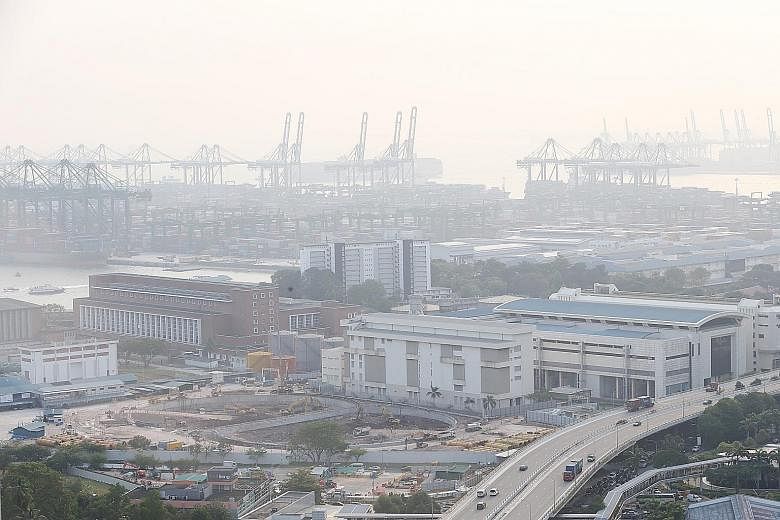The haze may be back, and could persist in the coming days.
The 24-hour Pollutant Standards Index (PSI) - a measure of air quality here - is creeping steadily towards unhealthy levels.
At 3pm yesterday, air quality in southern Singapore was 99, just shy of the 101 reading that denotes unhealthy air quality.
The National Environment Agency (NEA) said in a statement yesterday evening that hazy conditions experienced throughout the day were due to smoke haze from Sumatra being blown in by the prevailing winds.
Hazy conditions are expected to continue over the next few days, with winds forecast to continue blowing from the south or southeast, said NEA.
A mix of factors, such as fires, wind direction and weather conditions, can contribute to the increased occurrence of haze.
Currently, all these three factors have aligned to raise the incidence of smoke haze in Singapore.
For one thing, there has been a jump in the number of hot spots detected. On Monday, NEA said it detected 380 hot spots in Sumatra. The number jumped to 537 yesterday, with NEA noting that "moderate to dense smoke haze continued to emanate from persistent hot spots in Riau and Jambi provinces".
It said widespread smoke haze has also been observed over many parts of Kalimantan, where 749 hot spots were detected yesterday.
Second, the prevailing wind direction is not in Singapore's favour.
The Republic is currently in the midst of its south-west monsoon season, which is forecast to last until next month, the weatherman said in an update last month.
During this period, winds are forecast to blow mostly from the south-east or south-west, and on occasion from the west. This means smoke haze originating from fires in Indonesia, located south of Singapore, are more likely to affect the country.
Third, the region is experiencing hotter and drier weather as a result of a climate phenomenon known as the Indian Ocean Dipole (IOD).
The Meteorological Service Singapore warned last month that the IOD is currently in its "positive" phase, which causes hotter and drier weather here.
Singapore Management University's Associate Professor of Humanities Winston Chow said wind direction and rainfall are the two biggest factors governing whether haze is experienced here.
Said Prof Chow, a weather expert: "It appears that for at least the next five days or so, there is little chance of rain assisting firefighting efforts in the affected regions, so wind direction will be the major influence for haze in Singapore."
Currently, winds are blowing from the south-east, which means Singapore is escaping the brunt of severe haze, which is now enveloping Pekanbaru, the capital of Riau, and Jambi, said Prof Chow.
However, he added: "There may be periodic times when the winds come directly from the south or south-west. That means the smoke from hot spots closest to us will affect Singapore."
Mr Benjamin Tay, executive director for Singapore charity PM.Haze (People's Movement to Stop Haze), said the fires in Sumatra have been burning over the past two months, and that Singapore managed to avoid the smoke haze then due to favourable wind directions, although this is now changing.
However, he added, it was unlikely that the haze experienced this year would be as bad as the 2015 haze crisis. He said: "The El Nino event that year caused weather to be much drier than what we are experiencing now, and Indonesia has also stepped up its efforts to reduce and fight fires since then."


